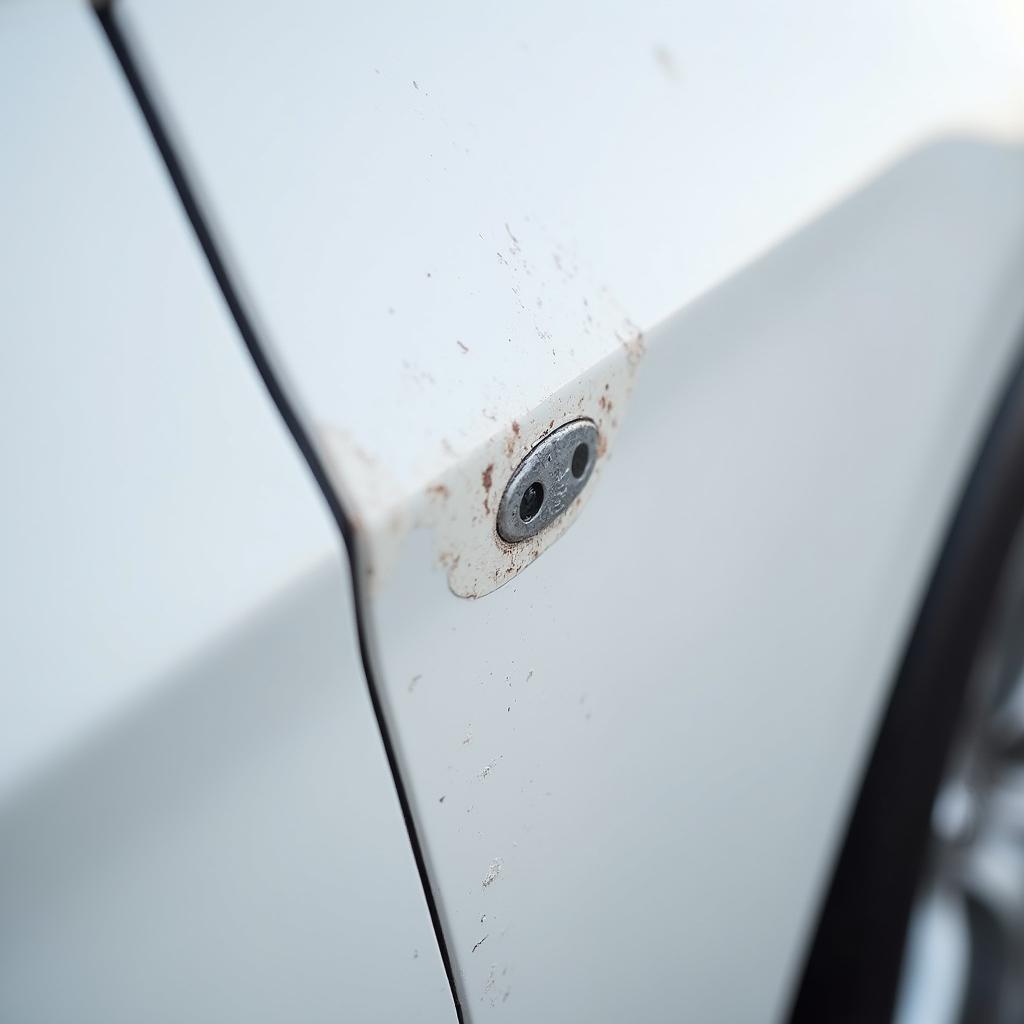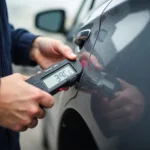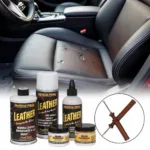Let’s face it, a paint scuff on your car can be an eyesore. Whether it’s a minor scrape from a tight parking spot or a more noticeable mark from a rogue shopping cart, these blemishes detract from your car’s overall appearance. But before you despair, take heart! Repairing paint scuffs on your car is often easier than you think. This comprehensive guide will provide you with the knowledge and techniques to tackle those unsightly marks and restore your car’s finish to its former glory.
Understanding Paint Scuffs: What You’re Dealing With
Before diving into the repair process, it’s crucial to understand the nature of paint scuffs. Unlike deep scratches that penetrate multiple layers of paint, scuffs are typically superficial, affecting only the clear coat or the top layer of paint. They occur when something rubs against your car, leaving behind a mark that appears lighter than the surrounding paint.
Assessing the Damage: Is DIY Repair Possible?
The good news is that most minor paint scuffs can be repaired at home with the right tools and techniques. However, deeper scuffs that expose the primer or bare metal may require professional attention.
Here’s a quick guide to help you assess the damage:
- Minor Scuffs: Appear as light scratches or hazy marks on the clear coat. These are typically DIY-friendly.
- Moderate Scuffs: May show a slight discoloration or reveal a hint of the base coat color. These can often be addressed with DIY methods, but may require more effort.
- Severe Scuffs: Expose the primer or bare metal underneath the paint. These typically require professional repair to prevent rust and ensure a seamless finish.
DIY Repair Paint Scuffs Car: A Step-by-Step Guide
For minor and moderate scuffs, you can often achieve impressive results with a DIY approach. Here’s a step-by-step guide to help you through the process:
Materials You’ll Need:
- Car wash soap
- Microfiber wash mitt
- Two buckets (one for soapy water, one for rinsing)
- Automotive masking tape
- Clean microfiber cloths
- Rubbing compound
- Polishing compound
- Car wax
- Applicators (for rubbing and polishing compounds)
Instructions:
-
Wash and Dry the Affected Area: Start by thoroughly washing the affected area with car wash soap and water using the two-bucket method. This removes dirt and debris that can interfere with the repair process. Dry the area completely with a clean microfiber cloth.
-
Mask Off the Area: Using automotive masking tape, carefully mask off the area surrounding the scuff. This protects the surrounding paint from accidental damage during the repair process.
-
Apply Rubbing Compound: Apply a small amount of rubbing compound to a clean applicator pad. Using gentle, circular motions, work the compound into the scuff. Focus on blending the edges of the scuff with the surrounding paint.
-
Wipe Away Excess Compound: Once the scuff starts to disappear, wipe away the excess compound with a clean microfiber cloth. Inspect the area to ensure the scuff is no longer visible.
-
Polish the Area: Apply a small amount of polishing compound to a clean applicator pad. Using the same gentle, circular motions, polish the area where you applied the rubbing compound. This step removes any remaining imperfections and restores the shine to the paint.
-
Wax for Protection: After polishing, apply a layer of car wax to the repaired area and the surrounding paint. This provides a protective barrier and enhances the shine.
When to Call in the Pros
While DIY repairs can work wonders on minor to moderate scuffs, some situations call for professional expertise.
Consider professional repair if:
- The scuff is deep and exposes the primer or bare metal.
- You’re uncomfortable with DIY repairs or lack the necessary tools.
- The scuff is in a difficult-to-reach area.
- You’re unsure about the color matching process.
Preventing Future Paint Scuffs
While some scuffs are unavoidable, proactive measures can minimize their occurrence. Here are some tips to help you protect your car’s finish:
- Practice Safe Parking: Whenever possible, park in well-lit areas away from shopping cart corrals and other potential hazards.
- Be Mindful of Obstacles: Pay attention to your surroundings when driving and parking, especially in tight spaces.
- Regular Washing and Waxing: Frequent washing removes dirt and grime that can cause micro-scratches, while waxing provides a protective layer.
- Consider Paint Protection Film: For added protection, consider applying paint protection film to vulnerable areas like bumpers and hoods.
Repair Paint Scuffs Car: Restoring Your Car’s Beauty
Repairing paint scuffs on your car doesn’t have to be a daunting task. By understanding the nature of scuffs, assessing the damage, and following the appropriate repair methods, you can restore your car’s finish and maintain its aesthetic appeal for years to come. And remember, for those more challenging repairs, professional help is always available to ensure a flawless result.
FAQs
Q: Can I use toothpaste to repair paint scuffs?
A: While toothpaste contains mild abrasives, it’s not recommended for repairing car paint scuffs. Toothpaste can be too abrasive and may damage the clear coat. Stick to dedicated rubbing and polishing compounds designed for automotive paint.
Q: How long does it take for rubbing compound to dry?
A: Rubbing compounds typically dry to a haze within a few minutes. Always refer to the manufacturer’s instructions on the product label for specific drying times.
mobile car paint repair edinburgh
Q: How often should I wax my car?
A: It’s generally recommended to wax your car every three months or so. However, the frequency may vary depending on your car’s exposure to the elements and the type of wax you use.
Q: Can I repair paint scuffs on a leased car?
A: Yes, you can repair paint scuffs on a leased car. However, it’s essential to follow the leasing company’s guidelines regarding repairs. Some lease agreements may specify authorized repair shops or have restrictions on DIY repairs.
Q: Can I touch up paint over a scuff?
A: Touch-up paint is generally not recommended for repairing scuffs. Scuffs are surface imperfections, and applying touch-up paint can result in an uneven finish. Stick to rubbing and polishing compounds for best results.
Q: What should I do if the rubbing compound doesn’t remove the scuff completely?
A: If the scuff persists after using rubbing compound, it may be deeper than initially assessed. Consider trying a more aggressive rubbing compound or seeking professional help.
Q: Can I use a power buffer to repair paint scuffs?
A: While power buffers can be effective, they require experience and caution. If you’re not familiar with using a power buffer, it’s best to avoid it to prevent further damage to your car’s paint.
Need More Help?
Have more questions about repairing paint scuffs on your car? Don’t hesitate to reach out! We’re here to assist you with all your car repair needs.
car paint damage repair near me
Contact us via:
- WhatsApp: +1(641)206-8880
- Email: [email protected]
Our dedicated customer support team is available 24/7 to answer your queries and provide expert guidance.



